Black Decker ADE80 Handleiding
Black Decker
Schaafmachine
ADE80
Bekijk gratis de handleiding van Black Decker ADE80 (7 pagina’s), behorend tot de categorie Schaafmachine. Deze gids werd als nuttig beoordeeld door 20 mensen en kreeg gemiddeld 4.3 sterren uit 10.5 reviews. Heb je een vraag over Black Decker ADE80 of wil je andere gebruikers van dit product iets vragen? Stel een vraag
Pagina 1/7

8
ENGLISH
SURFACING/THICKNESSING ATTACHMENT ADE80 (TYPE 3)
Congratulations!
You have chosen an Elu product. Years of experience, thorough product
development and innovation make Elu one of the most reliable partners for
professional users.
Table of contents
Technical data en - 1
Manufacturer’s declaration en - 1
Safety instructions en - 1
Package contents en - 1
Description en - 2
Assembly and adjustment en - 2
Instructions for use en - 3
Maintenance en - 3
Guarantee en - 3
Technical data
Using MFF80/ Using HH40/
MFF81 HH40E
Max. surfacing width 90° mm 80 82
Max. surfacing width 45° mm 45 45
Max. thicknessing capacity mm 80 x 80 80 x 80
Max. planing depth mm 3.75 4.0
Thicknessing table mm 500 x 80 500 x 80
Surfacing fence length mm 350 350
Weight kg 3.7 3.7
Manufacturer’s Declaration
ADE80
Elu declares that the attachment mentioned above has been designed in
compliance with 89/392/EEC.
This attachment must not be put into service until it is established that the
Power Tool to be connected to this attachment is in compliance with
89/392/EEC (identified by the CE-marking on the Power Tool).
Director Engineering and Product Development
Horst Großmann
Elu International, Idstein, Germany
Safety instructions
Observe the safety regulations in the instruction manual of the Power
Tool to be connected to this attachment. Also observe any applicable
additional safety rules. Read the following safety instructions before
attempting to operate this product.
Keep these instructions in a safe place!
The attention of UK users is drawn to the “woodworking machines
regulations 1974” and any subsequent amendments.
General
• The attachment must be level and stable at all times.
• Keep the work top clear of foreign objects.
• Use the attachment with the Power Tools and accessories specified in
this manual only.
• Secure the Power Tool carefully.
• Work with closed hands.
• Make sure that your work area is properly lighted.
Surfacing/thicknessing
1 Dust extraction
As the planer produces dust and chips, the use of dust extraction
equipment is recommended. Proper dust extraction is especially
important if beech or oak dust is produced.
2 Wear safety goggles
Also use a face or dust mask to protect against dust or flying particles.
3 Protection devices
Only operate the Power Tool and attachment with all guards properly in
place.
4 Inspect workpiece
Remove any nails, staples and other metal parts.
5 Cutter blades
Use sharp and undamaged cutter blades only.
6 Damaged parts
Before operation, inspect the attachment, the Power Tool, the power
cable and the plug carefully for signs of damage. Have any damage
repaired by an Elu authorized repair agent before using the tool or
attachment.
7 Starting the planer
Before switching on, remove all adjustment spanners from the planer
and attachment.
8 Operating the planer and attachment
Do not overload the planer by feeding it at a too high rate. Always feed
the material against the rotational direction of the cutter block. Always
use a push stick, especially when working with smaller workpieces.
9 Stopping the planer
After switching off, the cutter block will continue to run for a few
seconds. Do not attempt to block it.
10 Maintain your attachment with care
Keep the attachment clean and in good condition for better and safer
performance. Follow the instructions for maintenance. Keep all controls
dry, clean and free from oil and grease.
11 Have your attachment repaired by an Elu authorized repair agent
This attachment is in accordance with the relevant safety regulations.
To avoid danger, it must only be repaired by qualified technicians.
Package contents
The package contains:
1 Surfacing/Thicknessing attachment
1 Support foot
1 Support bracket with foot
1 Support for handle
1 Switch edge for MFF80/MFF81
1 Switch strap for HH40/HH40E
1 Plastic bag containing:
5 screws
5 nuts
1 securing clip
2 fence securing knobs
1 Instruction manual
1 Exploded drawing
• Check for damage to the tool, parts or accessories which may have
occurred during transport.
• Take the time to thoroughly read and understand this manual prior to
operation.
en - 1

9
ENGLISH
en - 2
Description (fig. A1 & 2)
Your Elu Surfacing/Thicknessing attachment ADE80 (Type 3) has been
designed to extend the versatility of your MFF80/MFF81 or HH40/HH40E
planer by converting it into a compact planer/thicknesser.
A1
1 Switch strap
1a Switch wedge for use with HH40 models
2 Securing clip
3 Wing nuts
4 Bench clamp holes
5 Thicknessing adjuster
6 Aluminium frame
7 Thicknessing table
8 Table height adjuster
9 Thicknessing scale
10 Surfacing adjuster
11 Planing depth adjuster
12 Blade guard for thicknessing
A2
13 Reversible fence
14 Thicknessing table clamp
15 Fence securing knobs
16 Rear support foot
17 Support bracket with foot
18 Planer mounting rods
No-volt release switch
A no-volt release switch is available as an option (E38676). It offers the
following advantages:
- Optimum safety: It prevents the machine from restarting inadvertantly in
the event of a power loss.
- It allows easier switching of the planer.
Assembly and adjustment
Do not mount any Power Tools other than the MFF80/MFF81
or HH40/HH40E.
Assembling the attachment (fig. A & B)
The screws and nuts required to assemble the attachment are supplied
with the surfacing/thicknessing attachment.
• Slacken the thicknessing table clamp (14).
• Raise the thicknessing table (7) by rotating the table height adjuster (8).
• Mount the rear support foot (16), the arm (28) and support bracket with
foot (17) using the nuts and screws (21 through 27) as shown.
Mounting the planer (fig. C)
• Remove the wing nuts (3) and the securing clip (2).
• Hinge the planer mounting rods (18) up and mount the planer as
shown.
• Reinstall the wing nuts (3).
• Pivot the planer into surfacing or thicknessing position and tighten the
wing nuts (3).
• Fit the securing clip (2) in the appropriate groove of the rear mounting
rod.
Calibration (fig. A & D)
The calibration procedure needs to be performed only once.
• Remove the calibration fence (20) and place it on the thicknessing table (7),
gauge cams (29) up.
• Set the table height to 15 mm using the table height adjuster (8).
• Secure the adjustment using the thicknessing table clamp (14).
• Pivot the planer into thicknessing position and check that all four gauge
cams (29) are level against the planing shoe. Adjust as required.
• Tighten the wing nuts (3).
• Loosen the thicknessing table clamp (14) and lower the thicknessing
table (7).
• Remove the calibration fence and reinstall it in its original position as a
side guard.
Adjusting the planing depth
• For planing depth adjustment, refer to the instruction manual of the
planer.
• Make shallow cuts only, passing the material several times if required.
For optimal results, select a maximum planing depth of 1.5 mm.
Thicknessing position (fig. A & E)
• Remove the reversible parallel fence (13) by loosening the star knobs (15).
• Swivel the support bracket (17) aside or remove it and pivot the planer
into thicknessing position. The planer mounting rods (18) now rest in
the brackets (30).
Thicknessing table height adjustment (fig. A)
• Loosen the thicknessing table clamp (14).
• Raise or lower the table by rotating the table height adjustment screw (19).
• Tighten the thicknessing table clamp (14).
Surfacing position (fig. B & F)
• Remove the calibration fence.
• Loosen the thicknessing table clamp (14).
• Set the thicknessing table (7) to bottom position.
• Swivel the blade guard (12) aside and pivot the planer into surfacing position.
The planer mounting rod (18) now rests in the support bracket (17).
• Check that the rear of the planer rests on the arm (28 in fig. B).
• If required, loosen the screw (26) using a screwdriver.
• Adjust the arm (28 in fig. B) in its slot and secure the screw.
• Tighten wing nut (3) to lock the planer in surfacing position.
Mounting the reversible parallel fence (fig. A2)
• Lower the side guard of the planer and install the reversible parallel
fence (13).
• Tighten the star knobs (15).
• For 45° bevelled workpieces, remove the star knobs (15), reverse the
fence, refit the star knobs and level the fence on the planer shoe.
Adjusting the blade guard (fig. G)
The blade guard (12) is mounted on a support bracket (17) that can be
pivoted away when the planer is not in surfacing position. In surfacing
position, the bracket also serves as a support to the planer mounting rod.
The blade guard height is adjustable.
• Loosen the surfacing adjuster (10), adjust the blade guard height in the
slot (31) and tighten the screw.
Adjusting the planer in surfacing position to be 90° to the reversible
fence (fig. C & G)
The calibration procedure needs to be performed only once.
• Use a square to check that the angle is 90°.
If this is not the case:
• Remove the reversible fence (13).
• Loosen the wing nuts (3).
• Pivot guard (12) away.
• Pivot the planer up.
• Adjust the height adjustment screw (19) accordingly.
Dust extraction
• Use the dust extraction adapter of your planer and install it as
described in the instruction manual of the planer.

10
Maintenance
Your Elu attachment has been designed to operate over a long period of
time with a minimum of maintenance. Continuous satisfactory operation
depends upon proper tool care and regular cleaning.
• Remove dust and chips using compressed air.
Lubrication
Your attachment requires no additional lubrication.
Cleaning
Regularly clean the attachment with a soft cloth.
Elu After-Sales service
All Elu products are thoroughly tested before leaving the factory. However,
if the product needs repair, please contact your dealer or the Elu Head
Office for the address of the nearest Elu authorized repair agent (please
refer to the back of this manual).
Unwanted products and the environment
Take your attachment to an Elu authorized repair agent where it will be
disposed of in an environmentally safe way.
GUARANTEE
• 30 DAY NO RISK SATISFACTION GUARANTEE •
If you are not completely satisfied with the performance of your Elu
tool, simply return it within 30 days, complete as purchased, to your
Elu dealer, for a full refund or exchange. Proof of purchase must be
provided.
• ONE YEAR FULL WARRANTY •
If your Elu product becomes defective due to faulty materials or
workmanship within 12 months from the date of purchase, we
guarantee to replace all defective parts free of charge or, at our
discretion, replace the unit free of charge provided that:
• The product has not been misused.
• Repairs have not been attempted by unauthorized persons.
• Proof of purchase date is provided.
This guarantee is offered as an extra benefit and is additional to
consumers statutory rights.
en - 3
ENGLISH
Instructions for use
• Always observe the safety instructions and applicable
regulations.
• For short workpieces, always use a push stick.
Prior to operation:
• Check that the Power Tool is mounted as described above.
• Check that all guards and fences are in perfect working order and
mounted correctly.
• Connect a dust extractor.
• Set the required planing depth (refer to the instruction manual of your
planer).
Switching ON and OFF (fig. A)
• Press the ON/OFF-switch of your planer.
• Lock the Power Tool in ON-position using the switch strap (1) or
wedge (1a for HH40).
• To stop the tool, remove the switch strap or wedge.
When using a no-volt release switch (option)
• Press the ON/OFF-switch of your planer.
• Lock the Power Tool in ON-position.
• Lift the plug cover and plug in the Power Tool behind the connector.
• Connect the machining table to the mains by plugging an extension
cable into the connector of the no-volt release switch.
• To switch the planer ON, press the green button of the no-volt release
switch.
• To switch the planer OFF, press the red button of the no-volt release
switch.
HH40E
On electronic planers, the brake will not operate if switched off via the no-
volt release switch.
Surfacing
Surfacing at 90° (fig. A2)
• Press the material firmly against the parallel fence and on the planer
shoe and feed it against the rotating cutter block.
• The blade guard will yield and return to its original position
automatically.
• Always work with closed hands.
• Keep your hands away from the rotating cutter block!
Surfacing at 45° (fig. H)
• Reverse the parallel fence (13) as described above.
• Proceed as described for surfacing at 90°.
Thicknessing (fig. I)
• Set the thicknessing table (7) to the required height allowing for the
chip clearance.
• Place the workpiece on the thicknessing table (7) and feed the
workpiece smoothly under the guide blade (32) and parallel to the
planing shoe.
• At the outfeed side, pull the workpiece out holding it down.
• In case of excessive resistance, reduce the planing depth and check
the blades.
The sliding chip fence (33) can be opened for a better view of the
thicknessing operation.
• Slacken the screw (34) and slide the chip fence (33) in the direction of
the arrow (35).
• Wear safety goggles during this operation.
Product specificaties
| Merk: | Black Decker |
| Categorie: | Schaafmachine |
| Model: | ADE80 |
Heb je hulp nodig?
Als je hulp nodig hebt met Black Decker ADE80 stel dan hieronder een vraag en andere gebruikers zullen je antwoorden
Handleiding Schaafmachine Black Decker

28 Februari 2023
Handleiding Schaafmachine
- Bosch
- Fieldmann
- Meec Tools
- Graphite
- Hitachi
- Hikoki
- Proviel
- Gamma
- Yato
- Robust
- Proxxon
- Einhell Bavaria
- Gardena
- Alpha Tools
- Stihl
Nieuwste handleidingen voor Schaafmachine
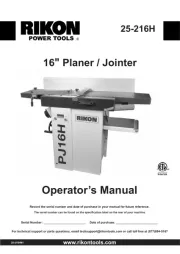
15 Juli 2025
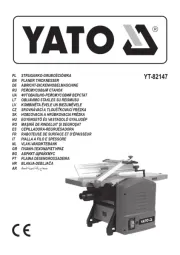
15 Juli 2025
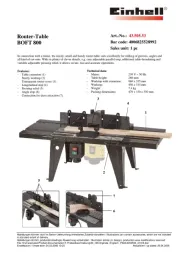
3 April 2025
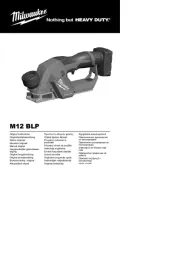
1 April 2025
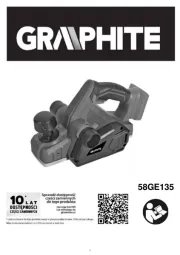
29 Maart 2025
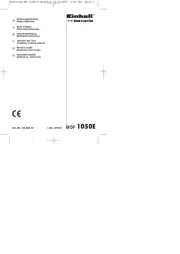
27 Maart 2025
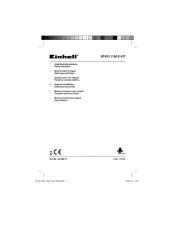
27 Maart 2025
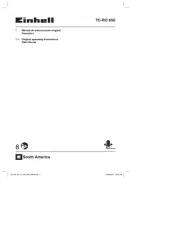
26 Maart 2025
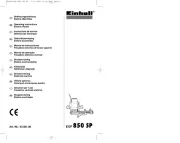
26 Maart 2025
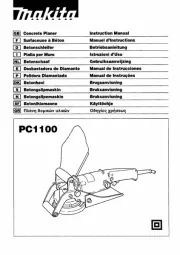
26 Maart 2025